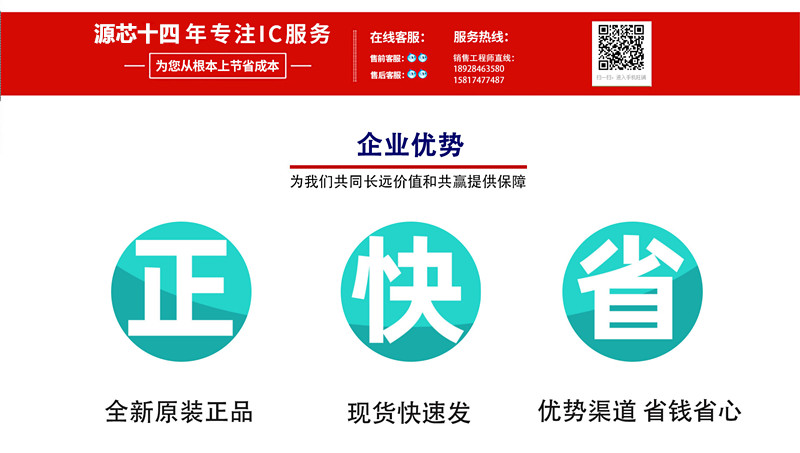The global technology industry has laid off over 203000 people this year, a nearly eight fold increase from mid January
Layoffs.fyi, a website that tracks layoffs in the technology industry, stated that over 203000 employees in the global technology industry have been laid off so far in 2023, an almost eight fold increase from mid January.http://www.ic-bom.com/
According to Layoffs.fyi data, the number of layoffs in the global technology industry this year has surpassed last year. From the beginning of the year to the present, a total of 754 technology companies have launched layoffs, affecting 203833 people. In 2022, a total of 1024 technology companies laid off 154336 people.
As part of its strategic adjustment, Spotify announced this week that it will lay off 200 employees in the Podcast department, accounting for approximately 2% of the total workforce. In addition, Barron‘s, Bloomberg and other foreign media reported last month that Alibaba Cloud Cloud, the cloud department of Chinese technology giant Alibaba, has started layoffs, and it is estimated that 7% of employees will be affected.
Meta also launched a new round of layoffs in late May, which is also the third round of layoffs this year, affecting a total of approximately 21000 people. CEO Mark Zuckerberg has predicted that this year will be Meta‘s "year of efficiency".
Other large technology companies are also actively cutting expenses. Microsoft announced earlier last month that its Linkedln subsidiary would lay off more than 700 employees and close its job application, InCareer, in China. Several technology companies, including Amazon, Salesforce, Zoom, Intel, and Google‘s parent company Alphabet, have also announced layoff plans. According to US media reports, the layoff trend of Science and technology in the United States enterprises since last year has intensified this year.http://www.ic-bom.com/
Since the second half of 2022, with the cyclical evolution and increasing competition in the global semiconductor market, global semiconductor companies have been pursuing higher operational efficiency and more promising markets. However, behind the semiconductor market, it has also brought a series of problems, and the layoff wave is one of them. In order to overcome the downward cycle of the industry, layoffs have become a solution for some semiconductor giants. The leading company, Samsung Electronics, has also experienced its first decline in net profit in three years. The company has decided to significantly reduce its year-end bonus, with the semiconductor department‘s bonus being slashed by 50%.

Semiconductor is a typical cyclical industry. According to the global semiconductor device sales data released by WSTS, there is an "M" cycle pattern in global semiconductors, which means there are two cycles of upward and downward trends every decade or so. The peak period of the upward cycle is characterized by chip supply exceeding demand and high market prices, which can refer to the "chip shortage" market in the previous two years; When the downward cycle reaches its lowest point, it manifests as overcapacity and low market prices, and the current semiconductor market performance is basically the same.
Consumer demand and market trends are decisive factors in the prosperity of the semiconductor industry, reflecting the market demand for semiconductor products. If the terminal demand increases significantly, it will stimulate semiconductor manufacturers to increase output, thus improving the prosperity of the entire Semiconductor industry. On the contrary, if the terminal demand decreases, the sales of semiconductor manufacturers will decline, which will lead to overcapacity or lower profits, which will reduce the prosperity of the entire Semiconductor industry. The explosion, growth, and decline of new terminal demand correspond to the upward, peak, and downward performance of the semiconductor industry cycle.

Amazon announced in March that it will cut 9000 positions in various departments, including the profitable cloud computing and advertising businesses. Previously, in January, the company announced the layoffs of 18000 people. Yuan Company announced a 13% layoff in November last year, equivalent to cutting 11000 employees. In March of this year, the company once again announced layoffs, with the aim of reducing approximately 10000 employees in the coming months to "improve efficiency in a difficult economic environment".
Alphabet Company stated in January that it plans to lay off around 12000 employees in response to the bleak economic outlook, with a 6% layoff rate being the largest in the company‘s history. Dell announced in February that due to rising interest rates and tightening financial conditions, the company will lay off approximately 5% of its workforce. Dell Co Chief Operating Officer Jeff Clark stated in a memo to employees that "market conditions are constantly deteriorating and the future is full of uncertainty." In addition, Microsoft announced that it will lay off 10000 employees.
The layoffs in the technology industry began last year and have been explosive and intense. Meta, which has the most layoffs, is the most radical company in the Metaverse. It is understandable that "people who stand on the top of the waves suffer the most losses". Any cutting-edge technology is not achieved overnight. Although the layoff tide has swept the whole year, it may just be a starting point. Where the layoff tide ends is still unknown. However, some experts predict that the technology industry will experience a recovery in the second half of next year.

With regard to the development status and future expectations of the
semiconductor industry, CITIC Securities believes that the semiconductor industry, after the catalysis of the ChatGPT and AI concept in the first quarter, is expected to promote the industry‘s prosperity to repair in advance. It is expected that the link recovery trend is expected to continue. It is expected that the demand for consumer electronics will recover in the next half of the year and the long-term AI will drive the demand for computing power and storage. Industry insiders also believe that semiconductor applications are relatively widespread, and the continuous economic recovery coupled with ChatGPT‘s rapid rise in popularity, the semiconductor industry‘s destocking is approaching its end and is expected to enter a turning point in the cycle. There is still significant room for growth in the consumption of semiconductors by new energy vehicles, which may affect the supply and demand gap of semiconductors in the future.http://www.ic-bom.com/









